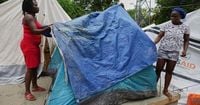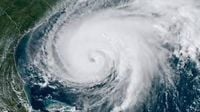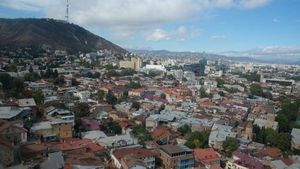As the sun rose over the Caribbean on October 24, 2025, Tropical Storm Melissa hovered almost motionless in the heart of the region, casting a long shadow of anxiety from Haiti to Jamaica and beyond. With maximum sustained winds clocking in at 65 mph (100 kph) and barely inching northwest at 3 mph (6 kph), Melissa’s sluggish pace was a harbinger of the devastation to come. Forecasters at the U.S. National Hurricane Center (NHC) and meteorologists across the region sounded the alarm: this storm was not just another seasonal threat, but a potential catastrophe in slow motion.
The storm’s center was pinned about 180 miles southeast of Kingston, Jamaica, and roughly 245 miles southwest of Port-au-Prince, Haiti, according to the NHC. Its erratic crawl meant that the Caribbean islands in its path would not only face the brunt of its winds, but also endure days of relentless, torrential rainfall. The NHC issued a hurricane watch and a tropical storm warning for both Jamaica and Haiti’s vulnerable southwest peninsula, urging residents to brace for the worst.
“These heavy rains are just going to sit over one area for several days,” warned Jamie Rhome, deputy director at the NHC. Forecasters predicted up to 25 inches (64 centimeters) of rain for parts of Jamaica, southern Haiti, and the southern Dominican Republic through October 28. For Haiti’s Tiburon Peninsula, the outlook was even grimmer: as much as 35 inches (89 centimeters) of rain could fall, an amount described by experts as exceptionally high even for a slow-moving system.
The consequences were already dire. In Haiti, a landslide in Port-au-Prince on October 23 claimed two lives and injured another, while earlier in the week, a falling tree killed an elderly man in the country’s south. The death toll in Haiti rose to three, and five more were reported injured in flooding across the central region. Meanwhile, the Dominican Republic reported one fatality and another person missing, with nearly 200 homes damaged and water supply systems knocked out—leaving over half a million customers without access to clean water. Floodwaters cut off more than two dozen communities, and both public schools and government offices in 12 provinces were shuttered.
The NHC’s warnings were stark: “Heavy rainfall will result in catastrophic flash flooding and landslides across southwestern Haiti into early next week.” The slow progress of the storm meant that strong winds and pounding rain could linger over Haiti’s Tiburon Peninsula for more than a day, compounding the risk for already vulnerable communities.
“Melissa is evolving into a slow-motion disaster,” said Alex DaSilva, AccuWeather’s lead hurricane expert. “Millions of people are at risk of catastrophic impacts. We are increasingly concerned about the threat of a humanitarian disaster unfolding, especially if this storm stalls.”
For many Haitians, the threat of Melissa was a cruel double blow. Thousands, already displaced by gang violence in Port-au-Prince, found themselves huddled in makeshift shelters or even on the streets, with nowhere to go as the storm approached. “The message on the radio is to protect ourselves,” said Dina Georges, a resident of the capital. “How can I protect myself if I don’t have a home? I’m on the streets. And on top of that, I have two kids to protect.” Nephtali Johnson Pierre, 35, summed up the despair: “I’m dealing with two storms: the gangs and the weather.”
International organizations scrambled to help. The United Nations prepared over 100 emergency shelters in Haiti’s southern region, while local authorities and aid groups urged residents in at-risk areas to seek higher ground. Wilgar Joseph, from Les Cayes, shared his plan: “I’ll stay with a friend whose home is on higher ground so I can protect myself in case it gets out of control.”
In Jamaica, the government moved swiftly to prepare. Prime Minister Andrew Holness acknowledged the unique challenge posed by Melissa’s slow advance, stating, “Jamaica is at risk. There is a threat.” By Thursday, October 23, schools, health centers, and government offices across the island had closed, and more than 650 shelters were activated. Authorities warned that all airports would shut within 24 hours if a hurricane warning was issued. The Bahamas’ Foreign Affairs Ministry even announced the evacuation of Bahamian students from Jamaica, highlighting the regional scale of concern.
Residents across Jamaica sprang into action. Marcus Thompson from Kingston described his preparations: “We’ve been through storms before, but it’s better to be prepared early this time.” Others checked their roofs, cleaned gutters, charged phones, and moved cars to higher ground. Alton Williams of Mandeville said, “I moved my car to higher ground and gathered all essential documents just in case.” In eastern Kingston, Veronica James kept her children informed and a bag packed with medicine and important papers, ready to evacuate if needed.
Meanwhile, in the Dominican Republic, authorities took no chances. Emergency operations director Juan Manuel Méndez García stressed the seriousness of the situation: “This is an event that we should be following minute by minute.” President Luis Abinader echoed the urgency: “The main thing here is to save lives. The risk is the enormous amount of rain.” Evacuations in areas under alert were made mandatory, and officials emphasized the importance of heeding warnings as more than two dozen communities found themselves isolated by rising waters.
Looking ahead, forecasters warned that Melissa was poised to intensify. The storm was expected to strengthen into a hurricane by Saturday, October 25, and possibly reach Category 4 status by dawn on Monday. The NHC projected that Melissa would move near or over Jamaica early in the week, bringing hurricane conditions for 72 hours or longer—a rare and dangerous scenario. By Wednesday, October 29, the storm was forecast to strike eastern Cuba as a major hurricane, dumping up to 12 inches (30 centimeters) of rain in some areas.
Melissa is the 13th named storm of the 2025 Atlantic hurricane season, which runs from June 1 to November 30. The U.S. National Oceanic and Atmospheric Administration had predicted an above-normal season, with 13 to 18 named storms expected. As Melissa churned in the Caribbean, it served as a sobering reminder of the increasing intensity and unpredictability of tropical storms in a warming world.
For now, millions across the Caribbean are left to wait, watch, and hope that the worst can be averted. But as the region braces for the possibility of catastrophic flooding and landslides, the resilience and solidarity of its people are being tested once again.






